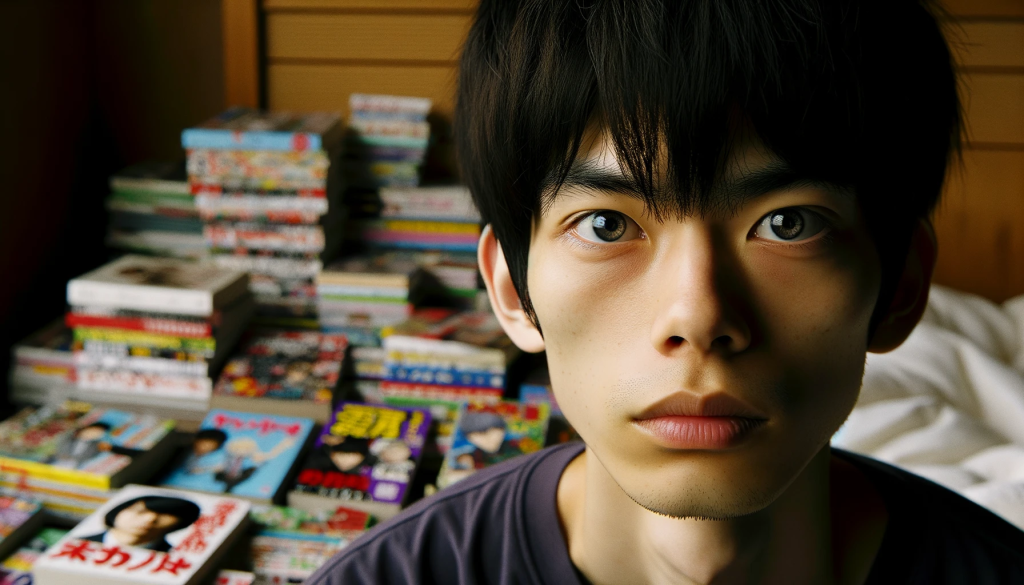The Shocking Sociological Phenomena of Hikikomori: Why 1 Million Japanese Are Choosing to Isolate from Society
We live in a fast-paced world filled with stress and pressure. Taking a break from it all can help reduce stress and improve overall health. Taking time to be alone can also help one connect with their inner self and aid in personal growth.

Unfortunately, some people don’t recover from this period of isolation and instead experience extreme and persistent withdrawal. This pattern of behavior is known as “hikikomori” and is common in Japan.
These are individuals, primarily men, who have withdrawn from society for at least a year, relying on their parents for sustenance and care. The Japanese government estimated in 2016 that there were 540,000 hikikomori aged between 15 and 39, although the actual number could be much higher.
The Story of Oguri Ayako and Ikuo Nakamura
Maika Elan, a Vietnamese photographer, spent time in Tokyo exploring the lives of hikikomori. She collaborated with Oguri Ayako, a Japanese woman working with a non-profit organization called New Start. Ayako’s role, often referred to as a ‘rental sister,’ is akin to that of a social worker.
She initiates contact with the hikikomori through letters, gradually building trust until they allow her into their lives. Ayako has helped between forty and fifty individuals break free from their isolation over her decade-long career.
One such individual is Ikuo Nakamura. Initially, Elan thought hikikomori were “lazy and selfish,” but her perspective changed as she got to know them.
Nakamura, who was once isolated, fell in love with his rental sister Ayako, and the two are planning to get married. Nakamura now aspires to become a ‘rental brother,’ helping others like him.
The Origins of Hikikomori
The term “hikikomori” was coined in 1998 by Japanese psychiatrist Tamaki Saito. He used it to describe the young people he saw who were in a state of extreme withdrawal but showed no signs of mental illness. It is estimated that 1.2% of Japan’s population is affected by hikikomori. This phenomenon is now seen in other countries as well.
Characteristics of Hikikomori
Hikikomori is characterized by physical and social isolation for at least six months. People affected by hikikomori are unable to attend a school or work due to the social interactions involved. Some may still be able to do activities outside of their home, but they rarely interact with others. They may use the internet as an outlet but still have no personal social interactions.
Possible Causes of Hikikomori
The cause of hikikomori is thought to be traumatic experiences of shame and defeat, such as failing an exam or not getting a desired job. People affected by hikikomori want to avoid re-traumatization, so they opt out of the “normal” pathway set out for them by society.
Research has shown that, although they don’t want to interact with society, they can’t forget the world they left behind.
Hikikomori and Mental Health Conditions
Experts are now beginning to see a possible connection between hikikomori and autism, depression, social anxiety, and agoraphobia. This lifestyle choice has been seen during the Covid-19 pandemic, where people have isolated themselves at home to stay safe.
The fear of infection, job loss, and social disruption due to lockdown rules could increase the risk of social withdrawal and detachment for many people.
Impact on Families and Treatment Options
Hikikomori affects not only the individual but also their family. Mental health, educational, and social care services often focus on responding to more dramatic problems, leaving the family feeling stuck and isolated.
As hikikomori increases, the prevalence of the condition is likely to rise. Treatment options focus on physical activity, rebuilding the capacity for social interactions, and the desire to return to school or work.
Whole family therapy is also being considered. It is important to help hikikomori people express their abilities and talents in a socially acceptable way.